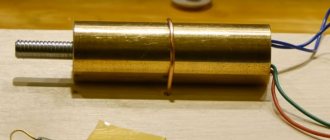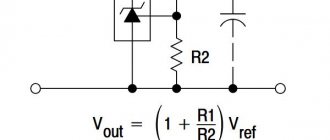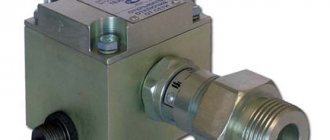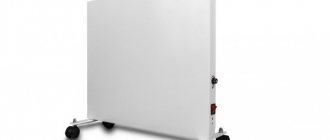Modern automatic transmissions are necessarily equipped with solenoids, which are in fact small solenoid valves-controllers. Such valves are responsible for opening/closing the oil channel in the hydraulic plate in accordance with impulses received from the ECU. In the past, automatic transmission solenoids were quite simple. Modern valves are much more complex, but at the same time, they practically do not wear out the hydraulic plate. Let's look at the structure and malfunctions of such solenoids.
Automatic transmission solenoid design
Since about the 80s of the last century, solenoids began to be actively used in automatic transmissions. The design of that time, today called On-Off , was distinguished by its simplicity and low cost. At the same time, the old solenoids suffered from open circuits in the windings and short circuits. In addition, the weakening of the spring meant that the oil passage would either not close in time or would stop closing completely. The further evolution of the solenoids is as follows:
- Volvo solenoids . The design was supplemented with a pushing core, a mesh filter in the channel and a special metal ball valve. The oil channel had two outlets at once. Essentially, it is a hydraulic valve and electrics in one housing. The solenoid valve has two positions: normally open and normally closed. When the valve is de-energized, the spring closes. As operation progressed, it became clear that this design turned out to be quite complex and the device failed too often;
- Three-channel solenoids (3-way). The peculiarity of such solenoids is that they connect 3 channels. In the first position, the ball allows the oil to move from the first channel to the second, and in the second position, a passage opens from the second channel to the third. Before the advent of such a solenoid, pressure was relieved from the clutch pack by a special mechanical valve, however, 3-way solenoids, being in the second position, could take on this task.
- Solenoid types PMW (pulse width modulation), VBS (variable skip), VFS (variable force). These are full-fledged regulator solenoids, operating on the principle of a “valve” rather than a “faucet”. PMW solenoids are actively used to control the secondary spool. More complex VBS have performed quite well: they are sensitive to even small fluctuations in supply pressure and effectively control low pressure flow. Most sophisticated VFS solenoids can handle both high and low pressure, but are not sensitive to changes in supply pressure.
Separately, it is worth noting the linear solenoids. They are often called proportional. Their largest designer and manufacturer is the Japanese company Aisin Co. The design of the solenoids provides for the presence of a movable spool-plunger with holes. Such solenoids allow the hydraulic plate to be operated in a gentle mode, since its most wear-out area was placed directly into the valve.
What are there
There are several common classifications. The first is based on the proportional indicators of moves and their number. Kinds:
Constipated;
Fig 4. Shut-off
- Distributing;
- Switching.
Fig 5. Switching
The second type of classification depends on how the mechanism and valves are located:
- Bistable;
- Normally open (if voltage is applied, they close automatically);
- Normally closed (closed in operating condition and opens after voltage is applied).
BS (bistable) has gained the greatest popularity because it is controlled using an electrical impulse, the transmission of which occurs through the remote control. It is used to determine the position of the device: closed or open.
Depending on the material used for seals and membranes, there are:
- EPDM;
- FKM;
- NBR;
- PTFE;
- TEFLON;
- VMQ.
They are distinguished by high elasticity rates using rare manufacturing technologies and chemical compositions. The latest models contain rubber and silicone. Thanks to the improved composition, endurance increases to 250 degrees.
Depending on the voltage withstand, valves can be divided into:
- With alternating current AC;
- With constant current AD.
Each type allows an error of +10%. The latest standard developed is designated IP65. According to the classification we can indicate:
- Pilot (impact is not carried out directly).
Figure 6. Pilot
- They act directly.
Fig 7. Straight
Such valves operate in the presence of minimal pressure or in its absence. As a rule, it is used for household needs, storage or drain receivers. The pilot version has an automatic control element. The mechanism operates with minimal differences in pressure.
Classification by purpose
Modern automatic transmission solenoids are classified not only by design features, but also by purpose (functions). Moreover, in recent years, new types of solenoids have appeared, as a result of which the classification of these devices may seem very complicated to the average car enthusiast. Let's try to figure it out.
The most common solenoids are labeled as EPC, LPC and TCC. EPC and LPC solenoids are also called line pressure control solenoids. Essentially, these are control devices that distribute oil to all other solenoid valves and allow it to move into the channels. As a rule, they are the first to fail.
TCC solenoids (also available as SLU ) are responsible for controlling the locking of the hydraulic transformer. Such valves take on the task of connecting and locking the torque converter clutch, which makes it possible to increase the efficiency of the gearbox and achieve sharp acceleration, as may be required by a sporty driving style. The problem is that hot and contaminated oil from the torque converter passes through the solenoids. Dirt in the oil (graphite, metal shavings, Kevlar) is formed as a result of the load on the clutches and other elements of the gearbox. Since modern gearboxes feature a “controlled slip” mode with accompanying oil heating, TCC solenoids operate under very harsh conditions. Like EPC or LPC solenoids, they fail frequently.
Switch solenoids, which are more correctly called Shift Solenoid , are responsible for changing speeds. Usually there are several of them. They have the following designations S1, S2,. (or SL1,... if the switch is linear). Sometimes denoted by the Latin letters A, B,. Referring to technical manuals, you can see combinations of open and closed valves corresponding to switching from one speed to another. The more stages in the gearbox, the more complex these combinations are. The relationship “3 speed = 3 solenoid” not always correct, so if problems arise with one of the speeds, you do not need to prepare to replace the solenoid of the corresponding order - first, you should have it diagnosed by a specialist.
As for new types of solenoids, everything is relatively simple. A control solenoid is identified, which takes on the task of controlling the hydraulic plate valves. A variation of the control valve, the oil cooling control solenoid works in much the same way as a thermostat - it opens a channel through which oil can flow through an external radiator. Also worth highlighting is the shift quality solenoid. It engages only when the gear is changed, guaranteeing a soft “slip.”
Possible causes of valve failure
Modern solenoids are capable of failing, just like any other complex car component. Moreover, the reasons may be not only due to wear and tear of the latter, but also related to other rather external reasons.
1. One of the reasons for the malfunction of the automatic transmission and solenoids in particular can be the use of poor, low-quality oil by the car owner. What happens in this case? An oil deposit begins to coke on parts of the valve, which at a certain moment will jam the rod in one position, and therefore the channel itself, and we can no longer talk about any normal functionality.
Repairing the solenoid in this case is complex and expensive, since not just one, but all of them will have to be replaced at once. Regular replacement of consumables and lubricants will help avoid this.
2. A malfunction of the car control unit can also lead to breakdown of the solenoid valves. But you can check whether this is true or not only through computer diagnostics of the machine. The cost of restoration will be high due to the cost of the block itself.
Location of automatic transmission solenoids and their service life
You need to look for solenoid valves in the lower part of the gearbox - in the hydraulic valve plate, otherwise called the valve body. The valves are secured using bolts or a pressure plate. In some automatic transmission models, the valve body is located not at the bottom of the unit, but on the side. In both cases, you can see cable wiring with leads to plugs that connect the solenoids to the on-board electrical system.
Due to the variety of design solutions, it is simply impossible to speak confidently about the service life of the solenoids. You can only note some of their features and refer to information from the manufacturers. For example, some of the most common automatic transmissions are equipped with VFS solenoids On average, such regulators require replacement every 3-5 years of active use. Such a short resource is due to the fact that due to wear in the solenoids, the degree of opening of the channel changes. The control unit adapts to such changes, but only up to a certain point. Simpler PMW solenoids today are assembled from anodized parts, so the product becomes more durable - the service life is 6-7 years, often even more. Very common linear solenoids usually last about 5-6 years. In some cases, even a worn-out device can be “reanimated” by cleaning, replacing the bushing, seals, rings and other elements.
Recommendations
- The Cambridge Advanced Learner's Dictionary
gives two phonetic variants /ˈsəʊ.lə.nɔɪd/ and /ˈsoʊ.lə.nɔɪd/."Solenoid: meaning in the Cambridge English Dictionary."
dictionary.cambridge.org
. Archived from the original on January 16, 2022. Retrieved January 16, 2017. - The French term was coined in 1823 from σωλήν "channel, pipe" and the -oid (-o-ειδής) suffix. "Solenoid" in: Trésor de la langue française informatisé
.
The Greek σωληνοειδ, "trumpet shape", is first attested in Aeneas Tacticus (4th century BC). Henry George Liddell, Robert Scott, A Greek-English Lexicon
(1843).
See also "Solenoid". Online Dictionary of Etymology
. Archived from the original July 28, 2011 - Session of the Academy of Sciences
of December 22, 1823, printed in: Ampère, "Mémoire sur la théorie mathématique des phénomènes électro-Dynamiques",
Mémoires de l'Académie royale des Sciences de l'Institut de France
6 (1827), Paris , F. Didot, S. 267ff.
(and figs. 29–33). "l'assemblage de tous les circuit qui l'entourent [namely l'arc], Assemblage auquel j'ai donné le nom de electro-dynamic solenoid
, du mot grec σωληνοειδὴς, dont laignation ex prime précising ce qui a la forme d' un canal, c'est-à-dire la surface de cette forme sur laquelle se Trouvent tous les circuit” (p. 267). - or, what is the same, the diameter of the coil is assumed to be infinitely small (Ampère 1823, p. 267: “des courants électriques formants de très-petits circuit autour de cette ligne, dans des plan infiniment rapprochés qui lui soient perpendiculaires”).
- [[1]]
- Giles, David. Introduction to magnetism and magnetic materials. CRC press, page 48, 2015.
- "Archive copy" (PDF). Archived (PDF) from the original April 10, 2014. Retrieved March 28, 2013.CS1 maint: archived copy as title (site link)
- Müller, Karl Friedrich (1 May 1926). "Berechnung der Induktivität von Spulen" [Calculation of the inductance of coils]. Archiv für Elektrotechnik
(in German).
17
(3):336–353. Doi:10.1007/BF01655986. ISSN 1432-0487. S2CID 123686159. - Callaghan, Edmund E.; Maslen, Stephen H. (October 1, 1960). "Magnetic field of a finite solenoid". NASA Technical Reports
. NASA-TN-D-465 (E-900). - Caciagli, Alessio; Baars, Roel J.; Phillips, Albert P.; Kuipers, Bonny W. M. (2018). "An exact expression for the magnetic field of a finite cylinder with arbitrary uniform magnetization". Journal of Magnetism and Magnetic Materials
.
456
:423–432. doi:10.1016/j.jmmm.2018.02.003. ISSN 0304-8853. - Course, Andre; Karalis, Aristeidis; Moffatt, Robert; Joannopoulos, J.D.; Fisher, Peter; Soljacic, Marin (6 July 2007). "Wireless energy transfer using tightly coupled magnetic resonances". The science
.
317
(5834):83–86. Doi:10.1126/science.1143254. PMID 17556549. S2CID 17105396. - Zhou, Wenshen; Huang, Shao Ying (September 28, 2022). "A New Coil Design for Broadband Wireless Power Transmission". 2022 International Applied Computational Electromagnetics Society (ACES) Symposium
. - Ren, Zhi Hua; Huang, Shao Ying (August 2022). "Design of a short solenoid with uniform B1 for portable low-field magnetic resonance imaging using genetic algorithm." Proc.
26th ISMRM : 1720. - Jian, L.; Shi, Y.; Liang, J.; Liu, C.; Xu, G. (June 2013). "A Novel Targeted Magnetic Fluid Hyperthermia System Using an HTS Coil Array for Tumor Treatment." IEEE Transactions on Applied Superconductivity
.
23
(3): 4400104. doi:10.1109/TASC.2012.2230051. S2CID 44197357. - Zhou, Wenshen; Huang, Shao Ying (July 2022). "An accurate model for quickly calculating the resonant frequency of an irregular solenoid". IEEE Proceedings of Microwave Theory and Techniques
.
67
(7):2663–2673. Doi:10.1109/TMTT.2019.2915514. S2CID 182038533. - Zhou, Wenshen; Huang, Shao Ying. "An accurate model code for quickly calculating the resonant frequency of an irregular solenoid." Magazine citation required | log = (Help)
- Zhou, Wenshen; Huang, Shao Ying (October 2022). "Modeling the intrinsic capacitance of an irregular solenoid". IEEE Transactions on Electromagnetic Compatibility
: 1–9. Doi:10.1109/TEMC.2020.3031075. - Zhou, Wenshen; Huang, Shao Ying. "Precision Model Code for Determining the Intrinsic Capacitance of Non-Standard Solenoids." Magazine citation required | log = (Help)
- D. Howard Dellinger; L. E. Whittemore and R. S. Ould (1924). Radio instruments and measurements
.
NBS Circular
.
C74
. ISBN 9780849302527. Retrieved September 7, 2009. - "How to hold a doorbell." Popular Science
(March 1975). March 1975. p. 117. Archived from the original May 14, 2018. Retrieved November 29, 2022.
Read more about automatic transmission solenoid faults
In modern transmissions, PWW type valves may not work efficiently enough, to which the electronic control unit will respond, but will not fail immediately. If the computer throws a "trouble code" such as OBDII: P2714 , the solenoid has completely failed. For other types of devices, failure may occur suddenly. Here are the main reasons:
- Severe wear of the inlet, plunger elements, and leaks. Practice has shown that the more contaminated the oil is, the faster the solenoid wears out. This is the main reason why PWW valves fail;
- The appearance of cracks on the solenoid body, open circuit of the winding, abnormal operation of the circuit (short circuit), weakening of the return spring. Valid for all solenoids. Rewinding, soldering, as well as cleaning and replacing bushings often helps;
- Contamination of the solenoid with wear products, the appearance of carbon deposits. Practice shows that the spool valves of the solenoids begin to work poorly after the oil warms up. The problem also occurs with cold oil, but much less frequently. Cleaning the solenoid or valve body element using solvents or ultrasound often helps. Experts also recommend demagnetization.
In the vast majority of cases, solenoids fail as a result of wear of the channels, ball or plunger, as well as valve, manifold and bushings. The process of wear of these elements begins with contamination of the solenoid. Bronze bushings wear out the fastest, while other solenoids, often made of anodized alloys , wear out for a very long time. If the device is removed, cleaned, optionally replacing worn parts, and also changing the oil, problems with the automatic transmission may disappear for a long time.
Riding character
As surprising as it may seem, the service life that the solenoid can serve you largely depends on the nature of your car’s driving. Experts say that a softer, leisurely ride on the car significantly extends the life of the solenoids.
But if you are a fan of a more aggressive manner of driving your car, then you should know that frequently pressing the gas pedal and frequently changing gears will cause failure of work, failure of the solenoid, wear in the literal sense of the word, literally in the first hundred kilometers .
Wear of the plunger will also cause the valve to fail, an irregular current supply will be observed, then you will notice that the lubricant is poorly supplied to the automatic transmission, then you will see poor functionality of the valve body and the gearbox as a whole, and so on. That is, banal excessive use of the clutch pedal can lead to automatic malfunction and disruption of the solenoid valve.
Checking automatic transmission solenoids
The first thing you should pay attention to is the quality of gear shifting. If it becomes too difficult to shift into one of the gears, and the driver also feels shocks and impacts, you need to check the valves. The second point: the appearance of chips in the pan. Third: the above error appears on the on-board computer. You should not immediately go to the store and select the appropriate solenoid. Perhaps the existing valve can still be “reanimated”. But first you need to check it. Let us immediately note that the most modern models of solenoids cannot be tested at home. For example, the failure of a PWM can only be determined by a qualified electrician. If the transmission has older solenoids or the problem is not related to the control device, do the following to check:
- Remove the valve body from the gearbox (located in the lower part of the unit, less often in the upper);
- Disconnect the contacts of each solenoid;
- Check the resistance of each solenoid with an ohmmeter. The resistance standards of the solenoids are different, so you can’t do without technical documentation. Below is a table with resistance standards for some solenoids (take into account the temperature!).
Spare parts for Samand norma
Turn signal on the wing
NORMA sedan (06 — )
Spare parts for Mazda 2
Oil pump 2 hatchback (DE) (06.07 - 06.15)
Do not forget that the on-board systems of modern cars have a self-diagnosis . It is possible that the solenoids will not have to be “ringed”—it will be enough to connect to the computer. If this fails, the only method left is using an ohmmeter. We also advise you to make sure that the wiring harness is intact. If the gearbox is equipped with the most modern solenoids, only a specialist can diagnose them.
Magnetic field created by the coil
When an electric current passes through the windings of the coils, it behaves like an electromagnet and the plunger, which is located inside the coil, is attracted to the center of the coil by the magnetic flux inside the body of the coils, which in turn is compressed by a small spring attached to one end of the plunger. The force and speed of movement of the plungers are determined by the strength of the magnetic flux generated inside the coil.
Read also: What kind of fabric is terylene (lavsan)
When the supply current is turned off (de-energized), the electromagnetic field previously created by the coil is destroyed, and the energy stored in the compressed spring forces the piston to return to its original resting position. This back and forth movement of the plunger is known as the "stroke" of the solenoids, in other words, the maximum distance the plunger can travel in the "in" or "out" direction, for example 0-30mm.
This type of solenoid is usually called a linear solenoid due to the linear directional movement and plunger action. Linear solenoids are available in two basic configurations, called "pull type" since it pulls the connected load toward itself when they are energized, and "push type" which act in the opposite direction, pushing it away from it when power is applied. Both push-pull and push-pull types typically have the same design, with differences in the location of the return spring and the design of the plunger.
Magnetic field created inside.
Selecting a New Solenoid
Determining the correct solenoid and installing it is a critical process in which mistakes are not tolerated. an ordinary car enthusiast can easily handle this job . Online guides and manuals from automakers and automotive electrical manufacturers will help him with this. Here are the search options:
- Search for a spare part by VIN code;
- Search by code of the existing solenoid;
- Search for the solenoid according to the vehicle and gearbox parameters.
The last option is the most difficult. First, you need to determine the type of automatic transmission, which can cause problems - one car model in different years could be equipped with different units. It is best to study the information on the nameplate of the gearbox itself. Next, you need to refer to the manuals for this automatic transmission. It contains all the information about the valve body and the solenoids with which it is assembled. In modern online stores, the search for a solenoid is simplified: the buyer selects the desired car model, year of manufacture, engine and gearbox parameters. This search option is not always an accurate result, especially if the online store does not have a high-quality database of cross-numbers for auto parts.
If you decide to take not the original solenoid, but its analogue, then you can be almost completely sure that it is produced by the same company that works for automakers. Among the most famous manufacturing companies it is worth noting Aisin, Borg Warner, ZF, Bosch. Good solenoids are also offered by Maktrans, Dorman, Meat&Doria. We do not recommend taking analogues from Danish, Polish and German packagers of budget auto parts.
external reference
| Wikimedia Commons has media related to Solenoids . |
- Interactive Java Tutorial: Magnetic Field of a Solenoid, National High Magnetic Field Laboratory
- Discussion of solenoids in hyperphysics
- Basics of Solenoids for Robotics
- Rotating Voice Coil Basics
- What is a solenoid
- How does a DC solenoid work?
- [2] Macro Magnetics.pdf; Calculation of solenoid forces
| Authoritative control |
|
Conclusion
Faulty automatic transmission solenoids should never be ignored. If the valve fails, the effect will be the same as when the clutch on a manual transmission is not depressed. The clutch pack will begin to slip, and the friction clutches will wear out catastrophically quickly. If at least one solenoid fails, it is necessary to diagnose, clean and repair the device, or buy a new one. Fortunately, the secondary auto parts market is open even to car enthusiasts from remote regions. We recommend buying original spare parts or analogues under the names of well-known brands. Do not forget to check the authenticity of the products - you can even find counterfeit solenoid valves on the secondary market.
How to recognize a breakdown?
An automatic transmission solenoid in the event of a malfunction can be identified by several signs:
1. Your automatic transmission has become much more likely to change into emergency mode.
2. If sharp shocks appear during standard speed mode switching.
3. If, with a smooth increase in speed, knocks in the gearbox are clearly audible.
Thus, having noticed such signs in the car, the owner urgently needs to carry out in-depth service diagnostics and, if detected, resort to automatic transmission repair. Because in such cases, service center technicians most often detect faulty solenoids.










